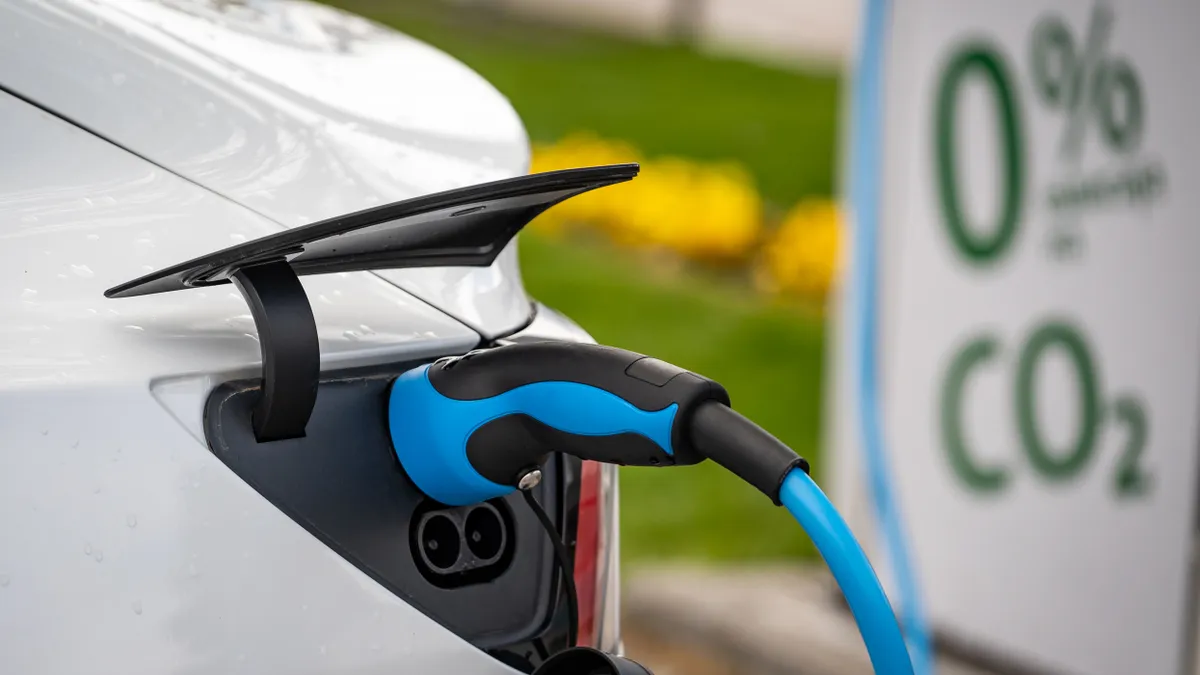Dive Brief:
- California regulators have approved the nation’s first vehicle-to-grid export rate for commercial electric vehicle fleets and chargers connected to energy storage, PG&E and the Vehicle-Grid Integration Council announced last week. Upfront incentives that will be provided by PG&E and payments for exported power under this rate mechanism are expected to advance the adoption of EVs by helping offset the cost of electric buses and commercial customers' fleets.
- Two-way vehicle chargers with storage, electric buses and EV fleets are the focus of this new real-time pricing three-year pilot, which can be extended by state regulators. The pilot seeks power discharges during times of peak demand and for backup power during outages, the utility said in an Oct. 26 statement.
- The utility’s territory is home to the largest EV market in the U.S., representing about one in every six EVs sold nationally. As many as 2 million electric vehicles in PG&E’s region could both charge from the grid and discharge into it to provide needed reliability, the company said.
Dive Insight:
The California Public Utilities Commission approved Oct. 20 a settlement among PG&E, the Vehicle-Grid Integration Council, or VGIC, Electrify America and the CPUC’s Public Advocates Office that sets a compensation mechanism for commercial electric fleets and bidirectional chargers supported by energy storage that provide grid reliability.
“The CPUC’s decision is a strong step forward for Californians and in support of the state’s grid, implementing the nation’s first dynamic export rate for EV charging customers,” Ed Burgess, VGIC policy director, said in a statement. “As ever-greater numbers of EVs hit the roads, this innovative rate option will allow EV owners to further benefit from their investment in clean transportation.”
The novel rate is to be implemented “as soon as practical” but no later than Oct. 1, 2023, the agreement states. PG&E is working on a launch date, said utility spokesperson Mike Gazda.
Participating customers will be compensated “for exports based on day-ahead hourly pricing,” said VGIC spokesperson Todd Zeranski. To encourage enrollment in the first 12 months, incentives will be offered to school buses and larger vehicles and be based on the equipment’s size. EVs and chargers able to discharge up to 100 kW are eligible for $1,800 with electric buses getting $3,150 in incentives. Those with larger batteries can reap $3,750, with an adder for large electric buses and the incentive totaling $6,560.
Analysts say fleet electrification is poised for significant growth, and school buses in particular offer opportunities for grid management because of their large battery sizes and predictable schedules.
In mid-October, a project was announced in PG&E’s territory that will connect electric buses to a branch of the Oakland Public Library. The buses are to provide up to six hours of power when the library serves as an emergency shelter.













